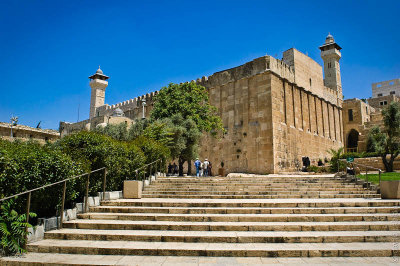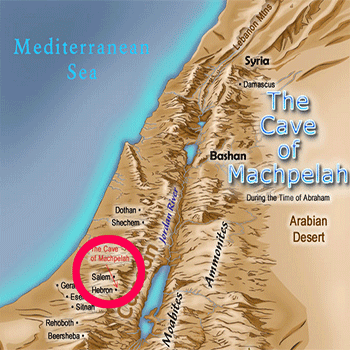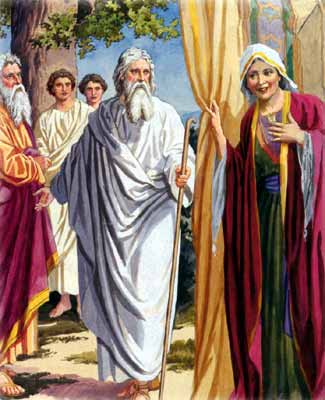“Chayei Sarah” Sarah’s Life
This week’s Torah reading, Chayei Sarah, the life of Sarah, begins by eulogizing the life of Sarah, who died at the age of 127 (Bereishit 23:1). It’s an interesting paradox, As the title of this Torah portion “The life of Sarah” begins with her death.

The Cave of Machpelah
Avraham had the task of burying Sarah, and he knew the ideal place where she was to be buried, the Cave of Machpela. We learn that Adam and Chavah were buried there, and Avraham wanted to purchase this burial plot of land so that Sarah, and later on he could be buried there. In fact Yitzchak and Rivkah along with Yaakov and Leah would also be buried there (Eruvin 53a).


Sarah’s Death
“And Sarah died in Kiryat Arba, that is Hebron, in the land of Canaan” (23:2). Sefer Breishit is the book of life, focusing on the creation of life in all of its forms. Much of parshiot Breisheet and Noach is taken up by seemingly meaningless lists of names of those who were born and helped to populate the planet. Interestingly, in the ten generations from Noach to Avraham, the Torah does not even mention death at all; rather, it lists one name from each generation, tells us that person had many brothers and sisters and that they lived so many years. We are never actually told that anyone died.

It is only with Sarah that death and burial become a focal point of the Torah, with twenty verses detailing her death, and the negotiations to purchase a plot and finally her burial. No other Biblical figure, with the possible exception of Yaakov, has their death described in such great detail. We are even told that it was Avraham who gave the eulogy. Yet his death, recorded at the end of Chayei Sarah, takes up exactly one verse. The deaths of Rivkah and Leah are not even mentioned in the Chumash.
Even more striking is the triple identification of the place of Sarah’s death, Kiryat Arba, Hebron and Canaan. Only in the story of Sarah are we specifically told where she died. We can well understand the Torah recording the burial place of the patriarchs and matriarchs, but of what
significance is the place of death?
The Land of Israel
“And G-d said to Avram, ‘Go…to the land which I will show you and I will make you into a great nation’”. Our connection to the land is a covenantal one between G-d and the Jewish people, not dependent on the whim of foreign rulers. This relationship is, as Rashi notes in his opening comment of the Chumash, one the nations of the world do not readily accept. They claim we are robbers who have stolen the land, that we are interlopers settling on land belonging to others. Hebron means to connect, lechaber; to join together people (chaver) or ideas (chibur). Our relationship to the land reflects the deep inner bond between the people of Israel and the land of Israel.
Jewish History
Jewish history begins with the call to Avraham to settle the land. With the death of Sarah, the first chapter of Jewish history comes to a close. It is her death that establishes the permanent link between the Jewish people and the land of Israel. Avraham work the land, building altars, proclaiming the name of G-d, digging wells, planting trees. In short, he begins to establish his presence in the land. But not until one is buried does one form an unbreakable bond to the land.
The Good Life ?
In this weeks parshah, right after we read of her death, at the age of one hundred and twenty seven, it is added that Sarah had a good life. One might think that though she had a long life, a life full of good deeds, it was anything but a good life.

Troublesome life
Anyone can see from reading the basic text, all the troubles Sarah had to endure. First she had to travel far away, then there was a famine. She was kidnapped twice, and experienced years of childlessness. Finally Sarah gave birth to a boy. Not long after that however, Yishmael, the son of her maiden Hagar, began to have a bad influence on her son, Isaac. Both Yishmael and Hagar had to be sent away. Now, we can call that a hard and troublesome life right? full of drama, sadness and hardships. The reason why it says she had a good life, is because of the way she, Sarah, looked at life, her positivity and faith in G-d.

Positive Perception
“Through a mix of nature, nurture, social conditioning and free will, we each possess a personalized lens that frames, forms, clouds and distorts the way we see ourselves and the world around us. In order to live in the most meaningful and effective way possible, each of us needs to continually assess and adjust the default frames we have developed.” In the book Positivity Bias, we learn that life is essentially good; that positive perception is applicable and accessible to all; that it derives from objective, rational insight, not subjective, wishful imagination, and that positive living is a matter of choice, not circumstance. Like Chayei Sarah.
Avoiding Evil
The way to growth, leading a good life, has a two-sided coin: “avoiding evil” and “doing good.” The key is to understand this polar duality, and to know when to do what and how, through the doing of good. We can automatically avoid the evil. Being able to tap into either of these energies and consciously choose which will serve you best as you strive to reach your goals and accomplish your mission, however, is anything but simple. What the Torah is teaching us, It’s a “good” goal, but it’s also vague and undefined, however, it is a higher spiritual priority to sustain our growth by being drawn to the good and what we see as positive.
Doing Good
This idea is taught by the Chassidic master, the Maggid of Mezeritch second leader of the Chassidic movement, successor to the Baal Shem Tov, who explained the Psalm “stay away from evil and do good” to truly mean “stay away from evil by doing good.” The two are connected. When we do something positive, we are naturally removed from the negative. In order to do something positive, you should think positive. May we always look at the bright side of life, may we always look at the glass half full, as a conscientious way to live a good life, in spite of hardships. Shavua Tov!
Check out YedidYah “Let There Be Light” a song about The Story of Creation. Music and Lyrics by Rabbi Yakira Yedidia https://www.youtube.com/watch?v=H0GEYQYwDI0
#####
This blog article was inspired by chabbad.org

